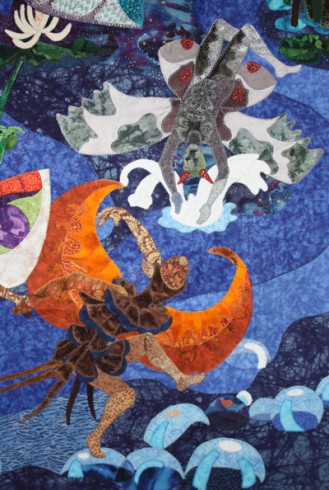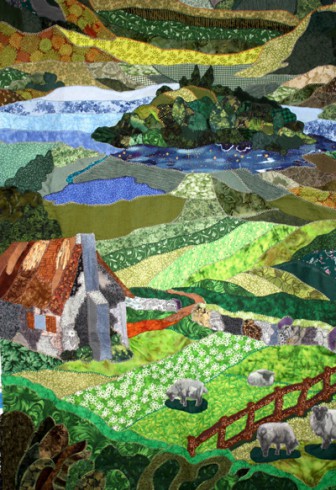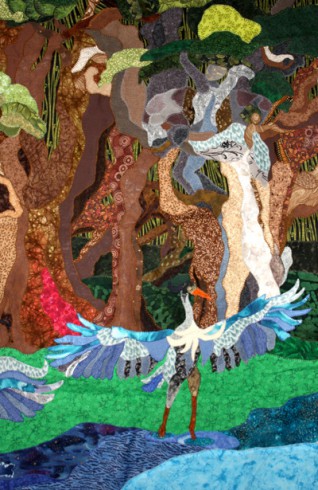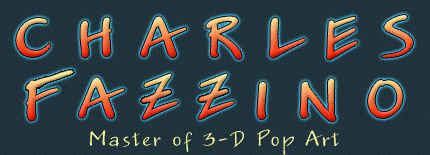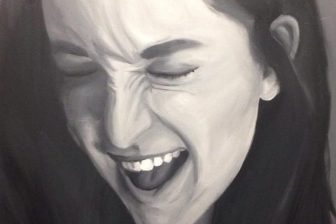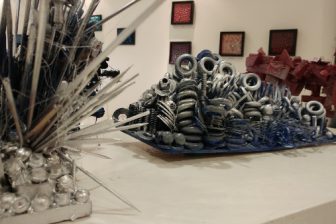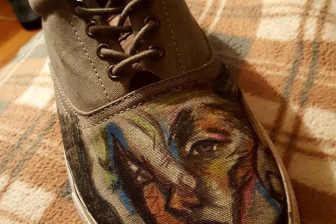This is the second in an ongoing series of profiles we’re presenting on Art Educators around the world. It’s all part of Charles Fazzino’s push to support the arts in our schools. “The teachers are on the front lines,” says Fazzino. “We need to do what we can to bring awareness to what they are achieving with our kids in schools. They are inspiring creative thinking and initiative in the classroom every day. I had the pleasure of working with Brian Fitzgerald long distance in 2010. He worked with a very talented group of students to create a mural celebrating the Fort Lauderdale Centennial. I advised the group and was so proud of the finished work.”
Every 4-6 weeks, we’d like to feature a different arts educator, someone who stands with us in the ongoing struggle to make sure the arts remain part our children’s lives. It’s such an important component. We’ve told you why WE believe so…now you’ll hear from some “boots on the ground” arts educators. If you’d like to be featured in this blog, please write to us at info@fazzinocollectors.com. We’d like to hear what you have to say!
QUESTION AND ANSWER WITH BRIAN FITZGERALD
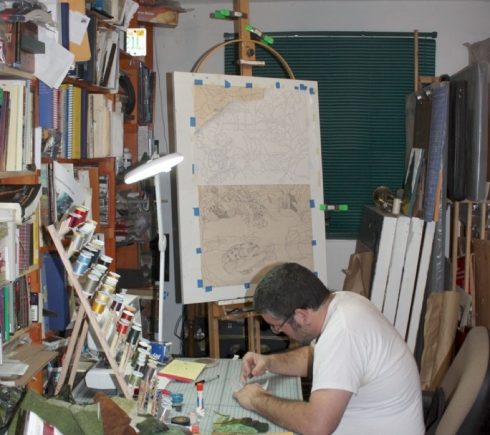
Meet Brian Fitzgerald, art teacher at Fort Lauderdale High School in Fort Lauderdale, FL.
How long have you been teaching art and how did you get into it?
I am completing my 12th or 13th year, I honestly can’t remember anymore. As time continues, the years meld one into the other.
What is the most challenging/rewarding project you’ve undertaken with your students?
I am not going to lie here – it was the Fort Lauderdale Centennial Mural. There have been other fun and meaningful assignments where I have had the pleasure of watching my students’ skills mature but not so extreme as that particular experience. The group work, leadership, intensity, fun, and final product will remain in my memory forever.
Tell us about one student on whom you feel art class had the most impact?
One year, I had a student who was having severe home issues and had suffered several family losses. Through her artwork – which became very dark and frightening – she expressed her feelings. I began to see the pattern of her work and subject matter and took it to the guidance department. It turns out that she was contemplating suicide and thankfully with the combined efforts of several school employees, we avoided that from happening. I will always hold that experience and time very close to my heart because it exemplifies the expressive
and therapeutic capabilities of art, and the school system working to its highest potential to help our students.
How do you address all of the various levels of talent, skill and interest in Art in your classroom?
This is a difficult question to answer. The most PC answer is called Differentiated Instruction. It basically means that a teacher is supposed to be able to cater to every student’s needs which could become very complex when a teacher has three different courses, ESOL, and ESE students all in one 50-minute period. Personally, when I teach a skill or concept I teach in tiers – where I start with basic skills, and then build on those skills until a student will be assigned a major project where he or she must demonstrate all the skills covered in the “unit”. How I cater to each student, is by integrating “one-on-one time” with each student to ensure that their individual needs are met; in this way I can speak to them and help them develop individually.
Why are you an art teacher?
It is in my blood. In my extended family there are at least 10 teachers, and my mother was an art teacher. Ever since I was little I have created or constructed things – the earliest was a motorcycle out of wood when I was about 5. My father helped me of course. When I got into college I enrolled in Art Education classes and really enjoyed working with the students and passing on Art as an important discipline in education. I also really loved my studio classes. Before I officially graduated, there was a Hiring Fair in the Reitz Union and to make a long story short I was hired before I graduated. To really answer the question of WHY I am a teacher is because I feel it is important to be involved with helping the generations of students coming of age to become productive citizens with strong character and a sense of responsibility and worth.
Do you have a “philosophy” about arts education?
My philosophy about the Arts in Education is that they are crucial, especially now because technology and what I call the “Push Button” generation has become detrimental to the children in our school. I have had several student who become discouraged when they have to color with a crayon because their fine motor skills haven’t been developed prior to our meeting. Art, Music, Chorus, and Drama all teach discipline, coordination, patience, perseverance, and design skills. They help develop imagination (another skill that has been pushed aside), and especially in the visual arts students learn problem solving skills that require personal decision making skills instead of formulas. These skills, in my opinion, are becoming extinct (to a degree) in our youth.
If we walked into your classroom, what could we expect to see?
Creative chaos.
What is the most challenging thing about being an art teacher?
Trying to teach students that Art making includes objectives, and planning; that aesthetics and quality are important as well as pride in oneself and one’s work.
What is the most rewarding thing about being an art teacher?
Watching a student with no refined skills, who in a way is a “mess,” become capable of planning and creating an artwork that demonstrates both learned skills and the joy of creating something.
Do you have a favorite art style or genre?
No, but I have styles that I dislike. I have found that I don’t care for modern Abstraction and/or non-objective work because I feel there is little commitment in it. I also find I don’t like artwork that is more about creating sensation than anything else.
Do you have a favorite artist?
John William Waterhouse. I love his ability to paint, and the narrative qualities in his work. There are many others; I have several sections in many sketchbooks with names of artists and artworks that I am able to look back and read over, but I am horrible with names.
Do you create your own art? In what style?
Yes I create my own work – I mostly am an oil painter and Art Quilter. I suppose some of my work would be called Regionalism and all of it could be referred to as Narrative. Right now I am working on a Art Quilt that has five separate panels, and when finished will be about 11 to 12 feet in length and about 5 feet high. Some of the panels can be seen on my website. My overall goal is to become a full-time artist but that road has proven difficult to get on and travel. I have a website that I have created for myself and my sister: www.fitzgeraldfinearts.net
